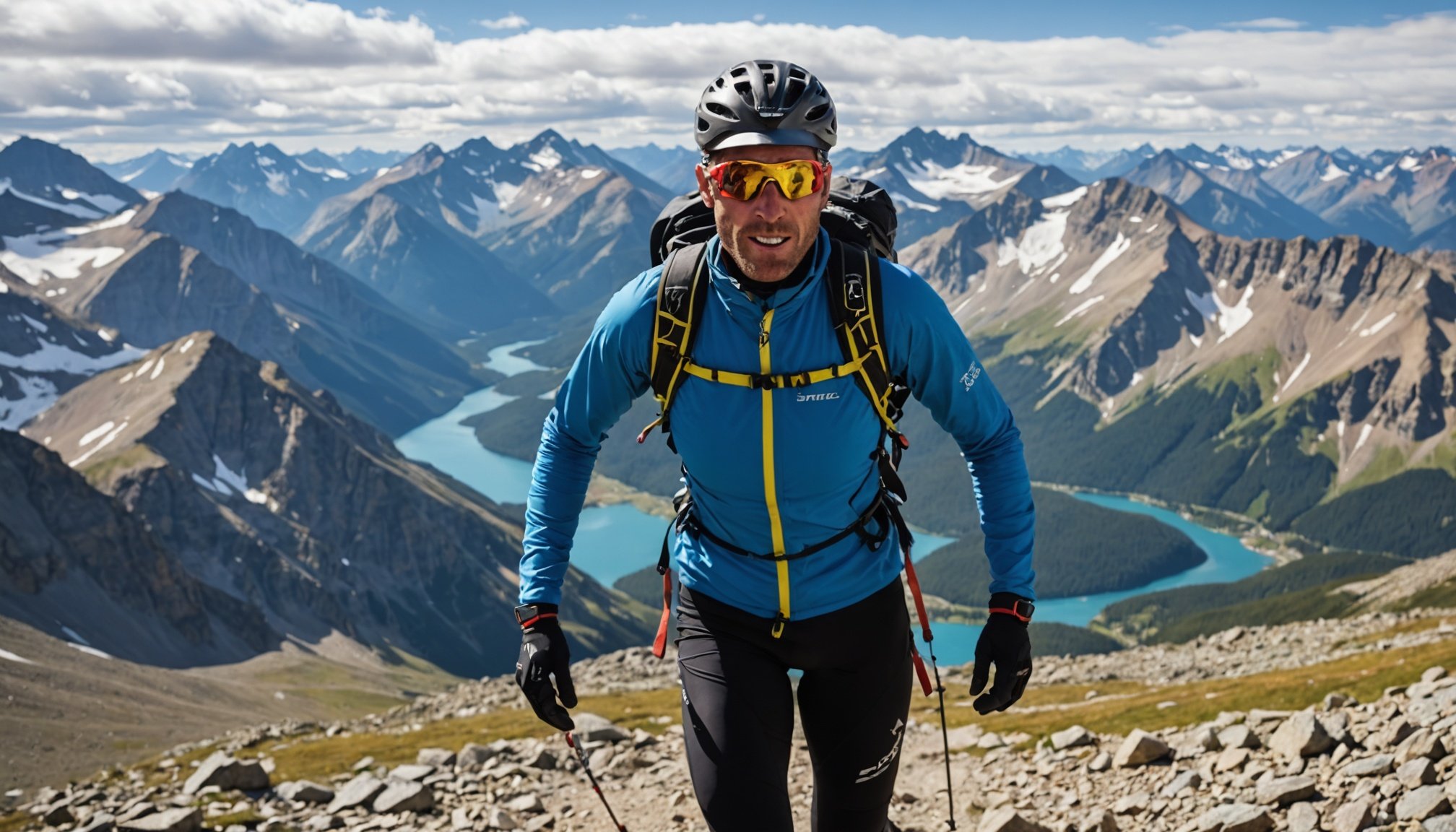Understanding High Altitude Challenges
High altitude presents unique physiological challenges primarily due to decreased oxygen availability. When athletes embark on high-altitude endeavors, they face the stark reality of thinner air, which impacts their athletic performance considerably. The body’s initial response is to breathe more rapidly in an attempt to increase oxygen intake, but this adaptation is just the beginning.
The primary effect of reduced oxygen levels is diminished aerobic capacity, influencing endurance significantly. Athletes often experience quicker fatigue because their muscles receive less oxygen, disrupting the usual energy production processes.
In the same genre : Mastering Transition Times: Essential Tips for Triathletes to Speed Up Race Segments
In response, the body undergoes several adaptive changes. Over days or weeks, the production of red blood cells increases to improve oxygen transport efficiency. Additionally, there is an increase in the capacity of cells to utilize oxygen efficiently. However, these changes take time and do not eliminate the initial decline in performance.
Adventure racers face numerous common challenges at high altitudes, including headaches, dizziness, and potentially serious altitude sickness if ascents are too rapid. Acclimatization, which involves gradually increasing one’s exposure to high altitudes, can mitigate these difficulties, allowing the body to adjust more smoothly to the reduced oxygen availability. Proper preparation and pacing are key strategies in overcoming these physiological challenges.
Also read : Top Power Exercises to Boost a Basketball Player”s Jumping Explosiveness
The Science of Breathing Techniques
Understanding the breathing mechanics and respiratory physiology is crucial for improving stamina and endurance, particularly in demanding activities like adventure racing. Effective breathing relies on the optimised use of the diaphragm and intercostal muscles, which enhances oxygen intake. This process increases performance enhancement by allowing your body to utilise oxygen more efficiently.
In the context of respiratory physiology, properly managed breathing can optimise the exchange of gases within the lungs, a critical factor that influences endurance. Oxygen is absorbed into the bloodstream, while carbon dioxide is expelled, helping maintain energy levels during prolonged physical exertion. Optimal breathing means your muscles receive sustained oxygen supply and perform better.
Recent research, including findings on the benefits of specific breathing techniques, shows that these methods can significantly improve athletic performance. Techniques like diaphragmatic breathing, often referred to as belly breathing, promote deeper oxygen intake and more complete exhalation, thereby boosting endurance. Such methods not only enhance physical performance, they also support mental clarity and stress reduction, resulting in an overall balanced physiological state.
By focusing on refined breathing mechanics and applying effective strategies, athletes can achieve improved performance and heightened endurance. These advancements can be pivotal, especially within competitive adventure racing.
Essential Breathing Techniques for Adventure Racers
Mastering breathing techniques can significantly boost your endurance and stamina. For adventure racers, this is crucial to achieve peak performance.
Diaphragmatic Breathing
Diaphragmatic breathing involves the active engagement of your diaphragm, promoting deeper and more effective breaths. Begin by lying down on your back, placing a hand on your chest and another on your abdomen. Inhale through your nose, ensuring your abdomen rises while your chest remains still. This method enhances oxygen intake and enhances stamina over time through increased lung efficiency.
Pursed Lip Breathing
Pursed lip breathing is particularly beneficial at high altitudes, where air is thinner. To practice, inhale deeply through your nose. Then, with your lips pursed as if whistling, exhale slowly and progressively. This technique prolongs exhalation, helping maintain oxygen levels and preventing breathlessness, which boosts endurance during intense racing situations.
Box Breathing
Box breathing helps racers maintain focus and control under pressure. Follow these steps: inhale deeply to a count of four, hold the breath for four counts, exhale for another four, and hold out for the final four. This cyclic breathing pattern reduces stress and improves respiratory efficiency, thereby supporting sustained performance. Incorporate these powerful techniques in training to enhance both mental fortitude and physical stamina during adventures.
Practical Breathing Exercises to Implement
Breathing exercises play a crucial role in performance optimization and altitude training. Implementing daily routines enhances lung capacity and efficiency, allowing athletes to adopt techniques that bolster their athletic ability. This section outlines some effective strategies to integrate into your training regime.
Daily exercises, such as diaphragm breathing, are fundamental. This technique focuses on deep breaths to fully engage the diaphragm, maximising the intake of oxygen. Practising this consistently at rest will gradually increase lung volume and, consequently, endurance.
During training sessions, it’s beneficial to incorporate rhythmic breathing techniques. By synchronising breath with movement, not only is efficiency improved, but stress is considerably reduced. For instance, inhaling for two steps and exhaling for two steps during a run ensures a steady supply of oxygen.
On race day, employing a specific breathing routine can aid in acclimatising to different altitudes. A valuable approach is to practice short, sharp breaths interspersed with longer breaths. This pattern mimics altitude training, potentially reducing fatigue and improving performance.
Integrating these breathing exercises into your regimen offers a strategic advantage by ensuring your body utilises oxygen effectively. This not only improves overall stamina but significantly supports altitude adjustments. Remember: consistency is key for optimum benefits.
Expert Testimonials and Real-World Applications
In exploring the efficacy of breathing techniques, athlete testimonials provide invaluable insights. Many seasoned adventure racers swear by incorporating high-altitude training in their regime. These racers describe how controlled breathing has become a vital part of their preparation, helping them adjust to the reduced oxygen levels typically found at high altitudes. Their accounts highlight the importance of targeted breathing in boosting endurance and overall performance.
Coupled with these anecdotes, expert insights from sports scientists further solidify the legitimacy of these approaches. According to research, high-altitude training aids in increasing red blood cell concentration, enhancing oxygen transport capacity. Experts emphasize that structured breathing exercises can foster more efficient energy use during demanding physical activities.
Moreover, case studies illustrate remarkable performance improvements attributed to intentional breathing practices. Take, for instance, a study involving professional cyclists: participants demonstrated increased lung capacity and improved recovery times. The focus on targeted breathing allowed these athletes to push their limits safely and achieve superior results.
Ultimately, blending anecdotal evidence with scientific research creates a comprehensive viewpoint on the potential of breathing techniques in athletic training, allowing both athletes and trainers to harness this strategy effectively.
Recommended Gear for High-Altitude Breathing Training
Training at high altitudes requires specific tools that can make a significant difference in performance and endurance. Here are some essential altitude training gear options and respiratory training tools to consider.
Altitude masks have become increasingly popular. These devices simulate high-altitude air, conditioning the respiratory system by restricting air flow. This pushes athletes to increase lung capacity and improve oxygen efficiency. While they are not substitutes for real high-altitude conditions, they effectively boost performance over time.
Also valuable are portable oxygen monitors. These tools help track oxygen saturation levels during intense workouts, allowing athletes to adjust their pace or intensity in real-time. Understanding and managing oxygen levels are crucial for maximising training benefits without risking health.
Liquid nutrition packs and hydration aids play supporting roles in breathing training. Staying hydrated ensures optimal physical and mental function, especially in challenging environments. Coupled with a balanced diet rich in electrolytes, these aids prevent cramps and fatigue while enhancing overall performance.
Incorporating these tools into a regular training routine empowers athletes to push their limits safely, optimising endurance and strength efficiently. For those serious about high-altitude sport or adventure, investing in these performance aids is invaluable.
Safety Precautions for Adventure Racing at High Altitude
When engaging in adventure racing at high altitudes, understanding and implementing safety precautions is essential. One of the primary concerns is altitude sickness. Recognising its symptoms, such as headaches, dizziness, and nausea, early on is crucial for your performance safety. Ensure you are prepared to tackle these signs by descending to a lower altitude and seeking medical assistance if symptoms persist.
Acclimatization plays a major role in preventing altitude sickness. Gradually increasing your altitude exposure over a few days allows your body to adapt. Training at varying altitudes before the race enhances your ability to perform safely. Incorporate breathing techniques—deep and rhythmic breathing helps maintain oxygen levels and circulatory function.
Monitoring your physical responses at high altitudes is key. Your body is under more stress, so pay close attention to heart rate and oxygen saturation. Consider using tools like pulse oximeters to track these. Additionally, consult with a healthcare professional or coach about the right training techniques and equipment tailored to high-altitude races.
In summary, your safety involves recognising symptoms, ensuring proper acclimatization, adjusting training methods, and remaining vigilant about physical cues during the race.










